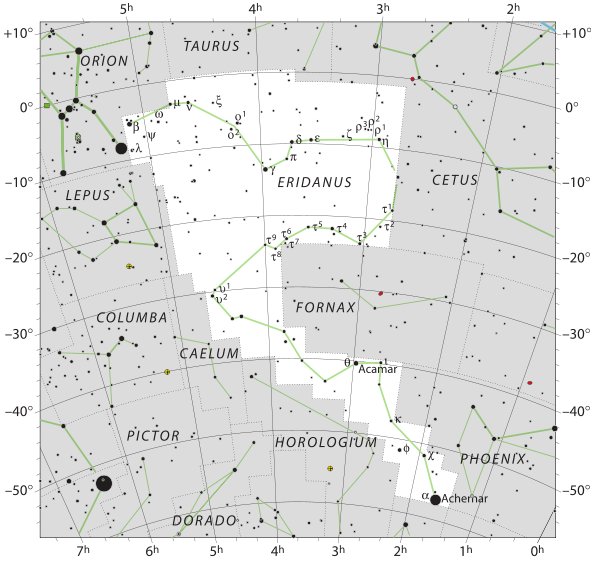Equipped with all these insights and ideas we can then consider the day when the Royal Double Canoe sailed off to Easter Island, viz. in Hora Nui 2. ... Hotu's canoe sailed from Maori to Te Pito O Te Kainga. It sailed on the second day of September (hora nui) ... [E:74] Assuming this day referred to "September 2 (when the northern autumn equinox was 20 days ahead) we can then look in the G text:
First, however, we should notice that at the time of rongorongo there were 14 days not only from February 1 with Acubens at the Full Moon to February 15 but also from Spica / Adhil to Khambalia / Mira :
We should primarily follow the lead of the heliacal stars in the G text. Thus a quick look in my table will reveal that Mira (*33) at the Sun should correspond to Khambalia (λ Virginis) at the Full Moon (*33 + *183), at a time when - according to the epoch of Bharani - this star would have been observed in "March 13. Half a year later Khambalia would have risen together with the Sun in "September 12. Maybe this means the Royal Double Canoe sailed off 10 days earlier at Gb7-21. The design of Gb7-31 suggests someone leaving in a hurry, and - we should remember - another such figure was at Alhena:
Mira (*33) - *10 = *23 (Achernar). This star ought to (according to extrapolation) have been at the Sun in "September 2 (245 = 286 - 41).
Which result seems promising because Achernar was at the beginning of the River Eridanus, a reasonable place from where to sail off;
presumably in order to reach Rigel in Orion *78 - *23 = *55 days later.
However, the date for reaching Easter Island was Tangaroa Uri 15 (288) which means the sea voyage apparently took only 288 - 245 = 43 days. But why not instead count 365 + 288 - 245 = 408 days? 408 - 43 = 365:
... When the creators of Manuscript E came up with the name Teke (Occiput) they could have been inspired by the 6 (ono, as in Tau-ono) unique 'occiput-birds' at the end of side b on the G tablet. To make their writings understandable they had to take account of the glyphs on the G tablet (which text had been published recently) ...
... Space and time are a single, related concept in Runasimi [the language of the Inca people], represented by one word, pacha, which can also mean 'world' and 'universe'. The image of time familiar to Waman Puma was static and spatial: one could travel in time as one travels over earth - the structure, the geography, remaining unchanged. To him it does not matter that he shows Inka Wayna Qhapaq, who died in 1525, talking to Spaniard, who did not arrive until 1532. Wayna Qhapaq was the last Inca to rule an undivided empire: he is therefore the archetype, and it must be he who asks the Spaniards. 'Do you eat gold?' In Andean thought both world and time were divided into four sectors or directions unified under a presiding fifth principle. The Tawantinsuyu - 'the indivisible four quarters' - was unified and presided over by Cusco, the center. Similarly, history was divided into four previous ages, presided over by a fifth, the present. In his book, Waman Puma organizes the history of both Old and New worlds according to this scheme. The Old Testament and the pre-Inca times are each divided into four equivalent and parallel ages. The 'present' age in Peru begins with the appearance of Manku Qhapaq, the first Inca, a being of supernatural origin. And in the Old World the 'present' starts with the birth of Jesus Christ ...
|
|||||||||||||||||||||||||||||||||||||||||||||||||||||||||||||||||||||||||||||||||||||||||||||||||||||||||||||||||||||||||||||||||||||||||||||||||||||||||||||||||||||||||||||||||||||||||||||||||||||||||||||||||||||||||||||||||||||||||||||||||||








